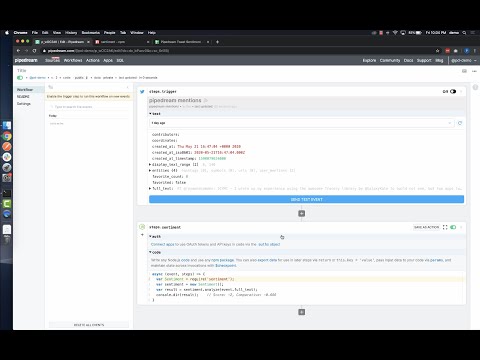What do you want to automate
with Strava and Google Sheets?
Prompt, edit and deploy AI agents that connect to Strava, Google Sheets and 3,000+ other apps in seconds.
Trusted by 1,000,000+ developers from startups to Fortune 500 companies
Popular Strava and Google Sheets Actions#
Add a single row of data to Google Sheets. See the documentation
Add multiple rows of data to a Google Sheet. See the documentation
Get all values or values from a range of cells using A1 notation. See the documentation
Returns the given activity that is owned by the authenticated athlete. See the docs
Overview of Strava#
The Strava API lets you tap into the robust data from Strava's fitness app, which is a playground for athletes worldwide to track their workouts. With Pipedream, you can automate actions based on activities uploaded to Strava, such as running, biking, or swimming. Imagine syncing workout data to spreadsheets for analysis, auto-posting achievements to social media, or integrating with calendar apps for better scheduling. Pipedream's serverless platform makes it a breeze to create workflows that can listen for Strava webhooks, process data, and trigger actions in countless other apps.
Connect Strava#
import { axios } from "@pipedream/platform"
export default defineComponent({
props: {
strava: {
type: "app",
app: "strava",
}
},
async run({steps, $}) {
return await axios($, {
url: `https://www.strava.com/api/v3/athlete`,
headers: {
Authorization: `Bearer ${this.strava.$auth.oauth_access_token}`,
},
})
},
})
Overview of Google Sheets#
The Google Sheets API allows for the creation, reading, updating, and deletion of data within Google Sheets, enabling a robust platform for spreadsheet management and data manipulation. Through Pipedream, you can craft serverless workflows that respond to various triggers, such as webhook events, emails, or scheduled times, to interact with Google Sheets. This synergy can automate reporting, synchronize data across applications, manage inventory, track leads in a CRM, or even conduct survey analysis by updating and retrieving sheet data on the fly.
Connect Google Sheets#
import { axios } from "@pipedream/platform"
export default defineComponent({
props: {
google_sheets: {
type: "app",
app: "google_sheets",
}
},
async run({steps, $}) {
return await axios($, {
url: `https://www.googleapis.com/oauth2/v1/userinfo`,
headers: {
Authorization: `Bearer ${this.google_sheets.$auth.oauth_access_token}`,
},
})
},
})
Related Videos#



Community Posts#


